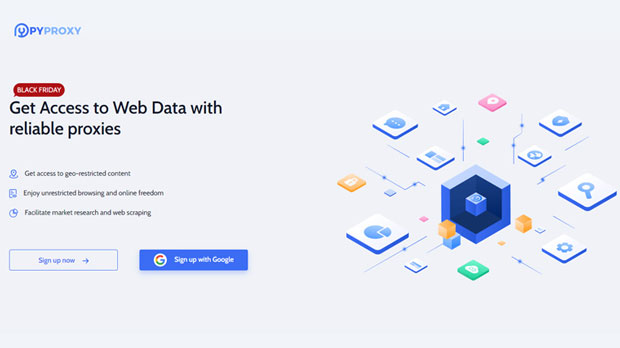Is Squid Proxy Server a better cost-effective choice for residential proxies than PyProxy S5?
In the world of residential proxies, the debate around which solution offers better value for money is a common one. Two popular options in this market are Squid Proxy Server and PYPROXY S5. Both are reliable proxy servers, but when considering cost-effectiveness, the differences can be significant. Understanding the pros and cons of each option is essential for businesses and individuals who rely on residential proxies for their operations. This article will explore whether Squid Proxy Server provides a better return on investment compared to pyproxy s5, delving into the cost, features, and performance of both solutions. Understanding Residential Proxies and Their ImportanceResidential proxies are essential tools that allow users to route their internet traffic through real residential IP addresses. These proxies offer greater anonymity and flexibility compared to traditional datacenter proxies, as they are less likely to be flagged by websites and services. This makes them particularly valuable for tasks such as web scraping, online marketing, accessing geo-restricted content, and bypassing restrictions.When considering the best residential proxy service, two main factors come into play: performance and cost-effectiveness. For businesses and individuals seeking optimal value, it is important to strike a balance between affordability and the features offered by each proxy solution.What is Squid Proxy Server?Squid Proxy Server is a widely used open-source proxy server that can be configured to handle a wide range of proxy-related tasks. It is a versatile solution that supports HTTP, HTTPS, FTP, and other protocols, making it suitable for a variety of use cases. Squid is known for its caching capabilities, which help improve speed and reduce bandwidth usage, ultimately leading to lower operational costs.Despite being an open-source software, Squid Proxy Server has a wide range of advanced features that can be customized according to user needs. For residential proxies, Squid can be configured with residential IP addresses, allowing businesses to create a robust proxy network. However, the server requires considerable technical expertise to configure and maintain.What is PyProxy S5?PyProxy S5, on the other hand, is a specialized proxy solution designed for residential proxies. This tool focuses on simplicity and ease of use, making it an excellent choice for users who prefer a more straightforward setup. PyProxy S5 is designed with a user-friendly interface, making it ideal for non-technical users who want to manage their proxy infrastructure with minimal hassle.Unlike Squid Proxy Server, PyProxy S5 offers a more plug-and-play experience. Users can easily set up and configure their proxies without deep technical knowledge. The software also provides support for rotating residential IP addresses, making it an attractive option for users involved in web scraping or other activities that require a high degree of anonymity.Performance Comparison: Squid Proxy Server vs. PyProxy S5When comparing the performance of Squid Proxy Server and PyProxy S5, several factors must be considered, including speed, reliability, and scalability.1. Speed: Squid Proxy Server is known for its efficient caching mechanism, which can significantly reduce latency and improve overall browsing speeds. Since it caches frequently requested content, users experience faster response times, especially when dealing with repeated tasks. However, PyProxy S5 also supports fast connections and rotating residential IPs, which can provide consistent performance for activities like web scraping. Both systems offer good speed, but Squid may have the edge when it comes to caching large amounts of data.2. Reliability: Both Squid Proxy Server and PyProxy S5 are reliable options. However, Squid's open-source nature means that it may require more maintenance and management to ensure consistent uptime. On the other hand, PyProxy S5, being a dedicated proxy solution, is designed to be more user-friendly and generally requires less intervention from the user, making it a more reliable option for those who prefer a hassle-free experience.3. Scalability: Squid Proxy Server is highly scalable due to its open-source nature. Users can expand their proxy network by adding more residential IPs, giving them the flexibility to grow their operations. PyProxy S5, while scalable, is more limited compared to Squid in terms of customization and the ability to manage large-scale proxy networks. However, its ease of use and ready-to-go features can make scaling up relatively simple for smaller or medium-sized operations.Cost-Effectiveness: Which Option Provides Better Value?Cost-effectiveness is a crucial factor when choosing between Squid Proxy Server and PyProxy S5. Here's a breakdown of how each solution compares:1. Squid Proxy Server Costs: Since Squid is open-source software, it is free to use. However, users may incur costs related to hardware, bandwidth, and the time needed for technical expertise. Setting up and maintaining Squid requires some investment in terms of time and money for server infrastructure and ongoing management. Additionally, businesses may need to pay for residential IP addresses, depending on the service provider they choose.2. PyProxy S5 Costs: PyProxy S5, while easy to use, comes with a subscription-based pricing model. This can result in higher ongoing costs compared to the free open-source nature of Squid. However, the cost of PyProxy S5 may be justified by the convenience it offers. It requires less time and effort to manage, which can lead to indirect savings in terms of labor costs. Moreover, PyProxy S5 typically includes residential IPs in its subscription, eliminating the need for additional purchases.In terms of sheer cost, Squid Proxy Server may appear more affordable due to its open-source nature. However, when factoring in the hidden costs of maintenance, hardware, and time, PyProxy S5 may offer better overall value, particularly for smaller operations or users who lack the technical expertise to manage a Squid setup.Which is the Better Option for You?Ultimately, the decision between Squid Proxy Server and PyProxy S5 depends on your specific needs and circumstances. If you are looking for a flexible, scalable solution and are comfortable with the technical setup, Squid Proxy Server may be the more cost-effective option in the long run. It provides a lot of control over your proxy network and can be customized to suit a variety of needs.On the other hand, if you value ease of use, convenience, and minimal setup, PyProxy S5 might be the better option. Although it may come with higher subscription costs, it eliminates the need for technical expertise and maintenance, making it a more practical choice for many users.In conclusion, both Squid Proxy Server and PyProxy S5 are excellent choices for residential proxies, but the right choice depends on your budget, technical expertise, and desired level of convenience. While Squid Proxy Server offers a more customizable and scalable solution, PyProxy S5 provides a user-friendly experience with less management required. Consider your specific requirements carefully before making a decision, as both options have their strengths and can be cost-effective depending on how they are utilized.
2025-03-04

























































